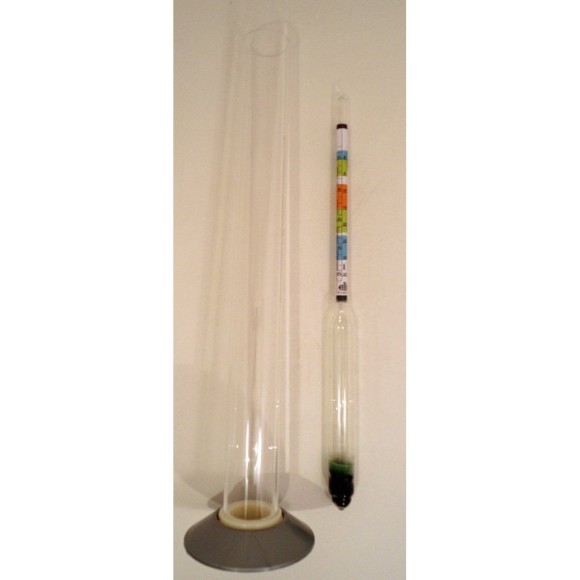Back Sweeten Wine
What is does it mean to back sweeten wine and why would anyone want to do it? When we back sweeten wine, we are taking a wine that is dry and making it sweeter. While there are many ways to back sweeten wine, I am going to share with you the way that works best for me.
There are many different kinds of wines. Some of them are bone dry, like most of the red wines I make. I have had a lot of dry white wines as well, like Chardonnay. However, some wines are much sweeter, like Moscato, while other are a little off dry, like Riesling. So, now you should be getting the idea that many wines vary in sweetness. Part of the joy of making home made wine is that you get to have some artistic license in areas like sweetness.
I prefer to ferment my wines out completely, so that they are bone dry. Many times I aim for about 14% abv in my wines. After the wines are completely dry, I go thru the normal de-gassing, clearing and stabilizing process. After the final racking and perhaps filtering, I make the decision if I want the wine to be sweeter. If I don’t, I just bottle the wine. If I do want it sweeter, this is my process:
- Add some Potassium Sorbate to the wine. I believe this is essential. The reason I do this is that I don’t want the yeast to feed off of the new sugar being added when I back sweeten the wine. Stir in the Potassium Sorbate well. If you haven’t put in sulfites, it is also a good idea to add them with the Sorbate.
- Make up some simple sugar by adding sugar to boiling water and making it dissolve. Let this syrup cool down. I choose to use organic sugar for this, but you can use what you want.
- Remove a sample of wine and add some of the syrup. Stir it up and taste the wine. Keep adding and testing until you get the sample to exactly the sweetness you like.
- Place your perfectly sweetened sample into a test jar and do a specific gravity reading with your hydrometer. Write down your reading.
- Now, all you need to do is back sweeten your wine by adding syrup to the whole batch of wine, a little at a time. Stir it well and test it for specific gravity. Keep doing this until the whole batch is the same specific gravity as your sample.
- Congratulations, your finished with back sweetening your wine.
Now, it is time to bottle, but not before a little, uh… quality control tasting.
So, that is my process and it has served me well all these years. Others may do it differently, but this is what works for me. Be sure to write your numbers down for a record of what you did. It may not be the same number each time, but at least you will have a ball park for back sweetening that style of wine.
Different wines will require different sweetness, if you decide to sweeten. For example, here are two videos from my wine making. One is a Vino Italiano Riesling kit and the other is Black Raspberry Wine I made from fresh organic raspberries. In these videos, the specific gravity for the spot where the wine is perfect is different. The Black Raspberry wine actually required more sweetness to bring the fruit out. Take a look at the videos and you will see the whole process.
Example 1: Back Sweetening Vino Italiano Riesling Wine
Example 2: Back Sweetening Black Raspberry Wine
I sure hope this article on how back sweeten wine is helpful for you. I have found that this method works better for me than putting a lot of sugar in the batch up front, then stopping the fermentation before the fermentation is complete. That method never worked for me consistently. When I back sweeten wine in the way I presented here, I get perfect results every time.
Cheers!



Thanks!!!!!!!
I backsweeten strawberry wine with a simple syrup made with strawberry juice instead of water. I press and freeze the juice when I pick berries. Gives it a fuller berry flavor. I have to rack it again before bottling.
For blueberry wines, I like a little white grape concentrate to slightly sweeten.
Awesome idea, Karin
What is your ratio of sugar to water for the syrup
2 cups of sugar to 1 cup of water to make simple syrup.
If you choose to back sweeten a dry wine with unfermented grape or berry juice instead of sugar, would you run the risk of developing a pectin haze?
Well, it depends on how much you are back sweetening. Probably not, but nothing is stopping you from adding a little pectic enzyme. Then, let it sit a week before Filtering and bottling.
Brilliant! Why have I never thought of doing it this way.
Thank You
Hi my question is… I’m making two separate batches, batch one has a first specific gravity reading of 1.080.
The second batch had it’s first reading of… 1.120… I tried to make both the same so shouldn’t it be close, thank you
Sounds like a stuck ferment. Look for my post on Stuck Fermentation.